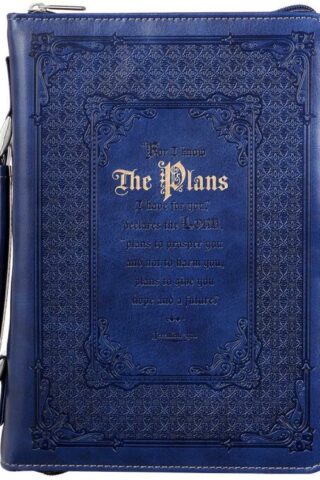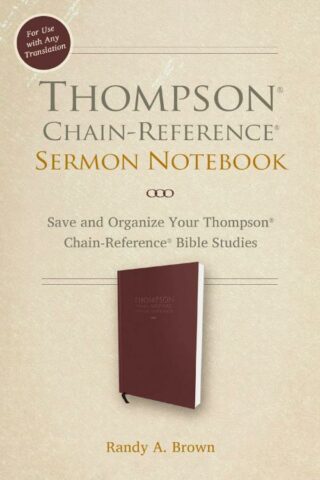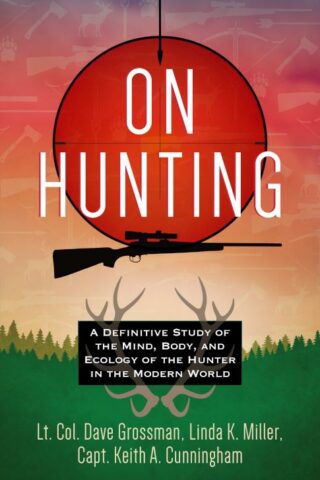
Cambio Ha Cambiado – (Spanish)
$14.99
El filosofo griego Heraclito dijo que el cambio es la unica constante en la vida.
!Pero el mundo ha experimentado tanta agitacion desde enero de 2020 que el cambio en si mismo ha cambiado! En los negocios, las iglesias y las organizaciones sin fines de lucro, los lideres han quedado hechos polvo a medida que los eventos y los desafios pasan rapidamente. El ritmo del cambio se estaba acelerando antes… pero la pandemia presiono el pedal a fondo.
“Estamos en un punto de inflexion”, dice el arquitecto de liderazgo y estratega de cambio Sam Chand. “La forma en que eran las cosas no es la forma en que seran las cosas”.
En su nuevo libro El cambio ha cambiado, Sam se propone ayudar a los lideres a comprender la naturaleza evolutiva del cambio para que puedan guiar a sus organizaciones con sabiduria y confianza.
El autor examina tres cambios importantes que compara con tres terremotos simultaneos:
– Nuestro ambiente ha cambiado. La gente trabaja desde casa, es posible que muchos negocios nunca vuelvan a abrir, y la forma en que compramos, manejamos las necesidades de salud e incluso vamos a la iglesia ha cambiado.
– Nosotros hemos cambiado. Hemos aprendido a vivir con una incertidumbre desenfrenada y una balsa llena de temores persistentes, !pero nuestros cuerpos y nuestras almas no estaban hechos para esto!
– Las personas que nos rodean han cambiado. Estan frustradas, aisladas, deprimidas, ansiosas y enojadas. Simplemente no se sienten seguras.
Sam enfrenta estos y otros problemas relacionados ofreciendo lecciones que capacitaran a los lideres a estar preparados para la proxima normalidad. “Soliamos hablar de una nueva normalidad como si fuera el punto final del cambio”, explica Sam, “pero si hemos aprendido algo en los ultimos meses, es que el cambio es perpetuo y tenemos que anticipar el proximo cambio en el horizonte”.
The Greek philosopher Heraclitus said change is the only constant in life.
But the world has experienced so much upheaval since January 2020 that change itself has changed! In business, the church, and nonprofits, leaders are being left in the dust as events and challenges speed by in a blur. The pace of change was accelerating before…but the pandemic pressed the pedal to the floor.
“We’re at an inflection point,” says leadership architect and change strategist Sam Chand. “The way things were isn’t the way things will be.”
In his new book Change Has Changed, Sam sets out to help leaders understand the evo
in stock within 3-5 days of online purchase
SKU (ISBN): 9781641237413
ISBN10: 1641237414
Language: Spanish
Samuel Chand
Binding: Cloth Text
Published: October 2021
Publisher: Whitaker House Publishers
Related products
-
New Thinking New Future (Audio CD)
$29.99Add to cart“The way leaders think matters-it matters a lot. The problem is that we almost universally make a colossal subconscious assumption that the way we think is the only possible way to consider our situations…. It’s like our minds are running antiquated software that’s slow, glitchy, and unproductive-but it’s all we’ve ever known. We need to upgrade the software in our heads!”-Sam Chand
With candor, humor, and personal stories, Sam peels back the layers of our assumptions to challenge us to think more deeply, more clearly, and more productively than ever before. He addresses fundamental topics all leaders instinctively address, including security, location, ownership, team, growth, and benchmarks of success. And he provides questions that leaders can ask themselves to develop New Thinking for a New Future.
-
New Thinking New Future
$24.99Add to cart“Our thought processes are so familiar, so ingrained, that we can’t imagine thinking a new way. It’s like our minds are running antiquated software that’s slow, with lots of glitches, and is unproductive, but it’s all we’ve ever known. We need to upgrade the software in our heads!”–Sam Chand
Some people thought they made Sam Chand “an offer he couldn’t refuse” when they invited him to speak at a two-day event overseas. After all, they were paying for first-class travel and accommodations for both Chand and his wife, plus throwing in a generous honorarium. But he didn’t jump at the opportunity. Chand was only interested in “the long-term, existential impact” on attendees. He asked, “Will every activity give me the opportunity to influence influencers? And can I be part of a leadership journey instead of just a leadership event?”
Rather than monetary gain, Chand was interested in building relationships. He was thinking in a different way than they were.Chand notes that our perceptions and thinking patterns determine our emotions, values, and beliefs, influencing how we respond to people and events. Sometimes, we are not even aware of the reasons behind what we say and do because our responses may be ingrained from childhood.
But Chand believes all of us can have New Thinking for a New Future. He has set out to help people move beyond specific goals and consider objectives and key results, challenge themselves, ask crucial questions, and “upgrade the software” in their heads. Through this book, Chand hopes to help others “think more deeply, more clearly, and more productively than ever before.”
-
Aprovecha El Poder De Las Tens – (Spanish)
$15.99Add to cartLa palabra tension proviene de la palabra latina tendere, que significa “estirar”. No es malo estirarnos en nuestras carreras, nuestra crianza de los hijos, nuestros ministerios o nuestro liderazgo. Sin tension, nos estancamos y dejamos de crecer. De hecho, podriamos decir que la tension es inevitable y, en muchos casos, deseable en la vida y el liderazgo.
En Aprovecha el poder de las tensiones: estirado pero no roto, el consultor internacional de liderazgo, Sam Chand, examina la tension a medida que surge en y entre los ambitos de negocios, iglesia y familia. La presencia de tension no es un defecto en ti o una amenaza de los demas. No es un problema para resolver, sino un recurso para utilizar. Cuando desarrolles esta perspectiva y encuentres tension, estaras menos confundido y te sentiras menos culpable porque entiendes que la tension no es el resultado de un error o un fallo tuyos. Experimentaras menos presion para resolver todo y menos compulsion para resolverlo rapida y completamente.
Cuando aceptamos la tension como una realidad de la vida, ganamos confianza y claridad mental ante ella. Nuestro objetivo no es deshacernos de la tension, sino usarla para crear algo mejor que antes. No caminamos sobre cascaras de huevo, por miedo a decir algo incorrecto. Aprendemos cuando hablar, cuando hacer preguntas, cuando escuchar y cuando dejar ir las cosas. A medida que nos relajamos en medio de la tension, vemos a las personas y las situaciones mas claramente, e invitamos a nuestras familias y equipos al proceso de utilizar creativamente la tension en la vida y el liderazgo.
The word tension comes from the Latin word tendere, which means “to stretch.” It’s not a bad thing to be stretched in our careers, our parenting, our ministries, or our leadership. Without tension, we become stagnant and stop growing. In fact, we might even say that tension is both inevitable and, in many cases, desirable in life and leadership.
In Harnessing the Power of Tensions: Stretched but Not Broken, international leadership consultant Sam Chand examines tension as it arises in and between the arenas of business, church, and family. The presence of tension isn’t a flaw in you or a threat from others. It’s not a problem to solve, but a strain to be used. When you develop this perspective and you encounter tension, you’ll be less confused and feel less guilty because you understand that tension isn’t the result of your error or flaw. You’ll experience less pressure to figu
-
Culture Catalyst : Seven Strategies To Bring Positive Change To Your Organi
$24.99Add to cartCulture Catalyst: Seven Strategies to Bring Positive Change to Your Organization
“Culture–not vision or strategy–is the most powerful factor in any organization. It determines the receptivity of staff and volunteers to new ideas, unleashes or dampens creativity, builds or erodes enthusiasm, and creates a sense of pride or deep discouragement about working or being involved there. Ultimately, the culture of an organization–particularly in churches and nonprofit organizations, but also in any organization–shapes individual morale, teamwork, effectiveness, and outcomes.” -from Chapter One
Often, organizational leaders confuse culture with vision and strategy, but they are very different. Vision and strategy usually focus on products, services, and outcomes, but culture is about the people–an organization’s most valuable asset. Culture Catalyst: Seven Strategies to Bring Positive Change to Your Organization offers a practical resource for discovering the deficits in an existing organization’s culture, and includes the steps needed to assess, correct, and change culture from lackluster to vibrant and inspirational, so that it truly meets the needs of the organization.
Prominent leadership consultant Sam Chand describes the five easily identifiable categories of organizational culture (Inspiring, Accepting, Stagnant, Discouraging, and Toxic), and includes diagnostic methods that leaders can use to identify the particular strengths and needs of their organization’s culture. To help in this process, there is also a separate, free, online assessment tool (www.samchandculturesurvey.com).
Once an organization’s culture is clearly identified, leaders can put in place a strategy for applying the seven keys of CULTURE (Control, Understanding, Leadership, Trust, Unafraid, Responsive, and Execution) that will make their culture one that stimulates people to be and do their very best and ultimately reach their highest goals.

 Jeremiah 29:11 Classic LuxLeather
Jeremiah 29:11 Classic LuxLeather
 Colossians And Philemon
Colossians And Philemon
 Super Giant Print Reference Bible
Super Giant Print Reference Bible











Reviews
There are no reviews yet.